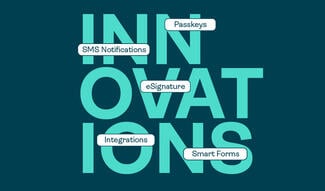OneSpan Sign Developer: Sender Tool – Part 2

In order to reduce the administrative burden and to save your precious time when managing a large number of senders under your organization’s account, OneSpan Sign offers a Sender Tool. This tool automates your process provisioning and updates senders. In the first part of this series, we outlined a few precautions for its use and the steps to prepare a CSV file passing the sender data to the tool.
Picking up where we left off, this second part will demonstrate how to run the tool and troubleshoot with any underlying issues.
Before We Start
The sender tool is a Java integration based on the OneSpan Sign API service that runs at the client side. Here’s a handy checklist of things to look for before we get start:
- Download the latest tool from developer community code share
- Submit a support ticket if you are managing large amount of senders
- Prepare a CSV file containing all the sender information
Complete the subtasks detailed in the part 1 blog, and we are ready to use the Sender Tool.
Running the Sender Tool
The Sender Tool initiates an intuitive step-by-step wizard. Once launching the executive Jar file, the first step is to select a OneSpan Sign instance and to input your admin user’s API Key or login credentials. Additionally, if your machine is connecting through a gateway, corresponding proxy settings are also required. These settings ensure the API calls can reach out to the OneSpan Sign server.
Click the “Test Connection” button, and the OneSpan Sign instance selected will be tested with given credentials.

The next step is optional. It pulls the existing sender emails under your account into a CSV file. You can cut and paste the column to your own CSV file as the starting point to prepare your sender data.

After you’ve fully prepared the CSV file, navigate to the next step where you will be prompted to select the CSV file through the File Explorer. In this guide, we’ll simply use the CSV file created in the previous blog:

For sender “company” and “status”, you have the option to specify them as CSV columns per each sender. Here we simply set the default values through the tool UI:

When processing an invitation, a tick will show up after each sender line in real time once a new sender is successfully invited.

Review the Outcome Report
After the sender tool finishes, it generates a report along with a log file at the same folder as the input CSV file.
The report file confirms the outcome of updating each user. Failed operations will be marked in the “Success” column with its error message.

Some of the most common issues are:
- The email has already been registered as a sender under another account
- You’ve reached the sender limitation in your account
The log file saves all the outbound API Calls and their responses, which is useful when troubleshooting issues in which the error message does not describe the problem well enough.
Note:
Because the log file may contain sensitive information regarding the sender profile, it’s important to delete the log file after you’ve confirmed all senders have been properly updated.
This walkthrough should provide you enough information to use the tool. If you encountered any issues when using the tool, check the outcome report and the log file first. Then feel free to make a post if you need any extra assistance.
If you have any questions regarding this blog or anything else concerning integrating OneSpan Sign into your application, visit the Developer Community Forums. Your feedback matters to us!










